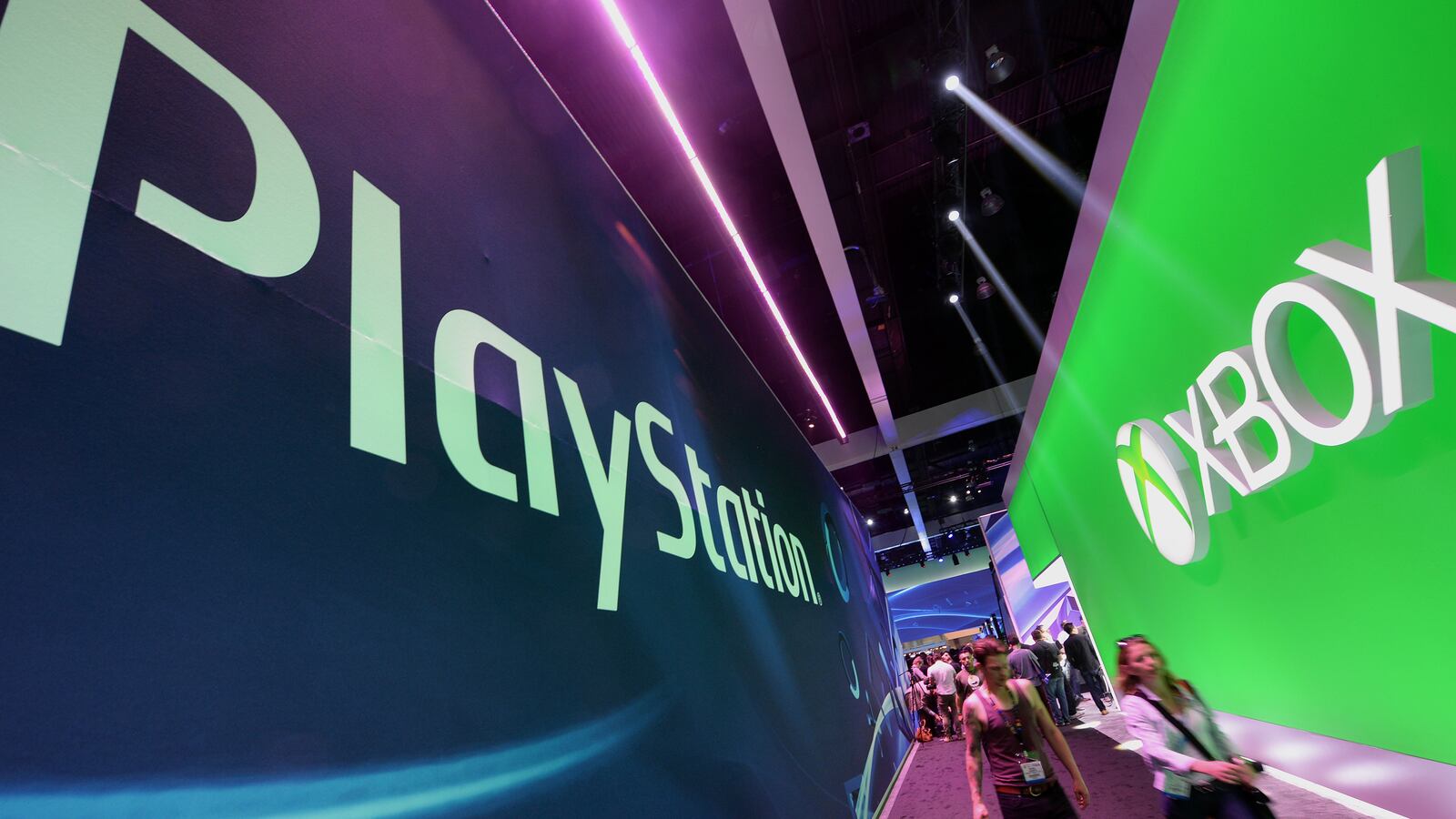For gamers, this week’s Electronic Entertainment Expo (or E3) in Los Angeles arrived with all the suspense and drama of a presidential election. Up for grabs: the spot as America’s favorite new gaming platform. The contenders: Microsoft’s Xbox One and Sony’s PlayStation 4. It’s been eight years since the Xbox 360 came out; seven years since the PS3. Both companies announced there would be updates to the platforms earlier this year, and since then gamers have been anticipating the unveilings, which may have a bigger influence on millennials than the Great Recession did on their ability to buy a videogame console in the first place.

But enough with the suspense. The future is here, the results are in, and the verdict is...
Not even close. The PS4 has been so roundly declared winner of the console wars that it makes Barack Obama’s victory last November look like a squeaker. The results of gaming news site IGN’s unofficial “election,” for example: of 84,000 voters, 75% picked the PS4 as the best platform. It was so obvious to so many people that those claiming to favor the “Xbone” were accused of being Microsoft shills, paid by the company to infiltrate message boards and comments sections to balance the scales. If only there were some massive government apparatus available to us to sift through the metadata and sleuth these fakers out.
For most people, the battle of the consoles—this first round of it, anyway—was won on three fronts: connectivity requirements, disc-based game sharing/trading, and price. The systems’ hardware are similar, both have Blu-Ray drives, people have already made up their minds about which controllers they prefer and it’s a little early to say which option will have the best exclusive games (not playable on both platforms). Some insist the Xbox One’s offerings are better; others are convinced PS4’s are.
As for those other categories:
Connectivity requirements. This is an admittedly banal way to describe a hugely controversial topic in the gaming world. Basically it works like this: Xbox One requires users to be connected to the internet at least once every 24 hours to play videogames. That means if you’re on an Army base with no internet, or Comcast decides to punish you for downloading illegal movies and music by kicking you off the web (or you forget to pay the bill), no Halo for you. Can you imagine?
Don’t like it? Don’t buy it, Microsoft’s Don Mattrick had the balls to say. “Stick with the 360,” he said. “If you have zero access to the internet, that is an offline device.”
Sony, on the other hand, cuts gamers some slack. You can play for eight years straight with a hand crank and candlelight with a PS4.
Game trading. Remember back when you had a Nintento 64 and you could go over to the neighbor’s house to play Zelda for awhile and then beat him up, steal the game, and bring it back to your own house? No longer, at least not for Xbox One users. You want to play one of their games? Prove you own it first or pay a fee. Gamers are so mad about this they are planning a Million Geeks March on Redmond later this year. If you thought Seattle’s WTO riots got ugly, you ain’t seen nothin’ yet.
Sony’s game-trade policy? Sure, go ahead. We’ll probably still make enough money.
Price. When Sony president Jack Tretton took the stage on Monday, the price announcement was the Moment Everyone Had Been Waiting For, the big dramatic climax. Fans were already gushing about the Sony’s first two big bomb drops, but the most important thing about a gaming console, at least for those of us for whom money is an object, is how much the dang thing costs. Microsoft had already showed its hand, setting the price of the Xbox One at a bank account-draining $499. Sony could simply match that price and still maybe win the console wars.
But Sony didn’t play it safe. The PS4 will cost $399. Steal 10 bicycles, pawn them and you’ve got a brand new entertainment system. The crowd was stunned.
“No restrictions on disc based games. No connectivity required. $399. Sony drops the mic and walks off stage,” tweeted Steve Tilley, tech writer for the Toronto Sun.
The only remaining question is where Sony found such a giant can of whoop-ass. We tracked down John Koller, vice president of hardware marketing for PlayStation, to see if he’d be able to contain his braggadocio after such a resounding victory. He did a pretty good job.
Those three decisions all came after pretty extensive conversations with its customers and its partners, Koller told The Daily Beast. The used games decision was made because “we stand for gaming, and gamers,” he said. The company also recognized that there’s an entire economy built around the buying and selling of used games and didn’t want to disrupt it.
Sony’s retailers also chimed in to say that gamers tend to spend whatever proceeds they make selling old games on new ones, Koller said: “Used games are good for frontline sales.” Plus, Sony knew it would piss off a whole fleet of gamers to clamp down on their ability to switch and swap. “We didn’t want the tidal wave of emotional fervor,” he said. “It wasn’t worth breaking glass for.”
The same thinking was behind Sony’s decision to let people play offline: what does the gamer want?
“We wanted to make games easy and painless,” Koller said. “You put the game in and it works. We didn’t want to put barriers up for our gamers.”
Koller wouldn’t discuss the financials, but he did say Sony arrived at the $399 price long before Microsoft announced $499, and after considerable research about what people would pay and analysis of what they’ve been willing to pay in the past. “We’ve learned a lot over the last three or four years,” he said. “The price is really born of that. I think it’s a magic price.”
Judging by the reaction so far from the gaming world, “magic” is exactly the word for it.




